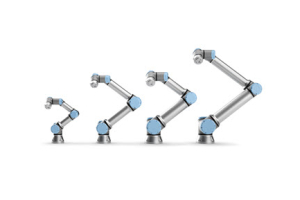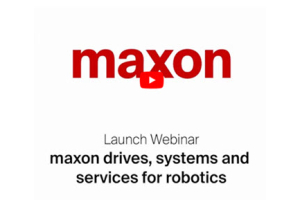
The Canadian music industry has a rich history and continues to be at the forefront of innovation and creativity. Technological advancements in mechatronics and automation have played a crucial role in shaping the landscape of Canadian music, enabling artists to push the boundaries of what is possible and create unique and engaging experiences for their audiences. This article explores key milestones in the intersection of mechatronics and automation with the Canadian music industry and showcases examples of products that can inspire and facilitate artists' creative visions.
The Canadian music industry has been thriving for over a century. In the early 1900s, phonograph records became a popular medium for music distribution, with artists like Wilf Carter and Hank Snow achieving commercial success.


The introduction of the vinyl record in the 1950s revolutionized the music industry, providing artists with a more durable and high-fidelity recording medium. Automation technology like record pressing machines made mass production of vinyl records possible, leading to the growth of independent record labels and the emergence of new musical genres.
In the 1960s, advancements in electronics and mechatronics began to have a significant impact on music production. The introduction of the Moog synthesizer in 1964, designed by Canadian engineer Robert Moog, revolutionized the way musicians approached sound creation. The Moog synthesizer used a combination of electronic circuits and mechatronic components, including oscillators, filters, and envelope generators, to produce unique and otherworldly sounds. The Moog synthesizer inspired a new wave of electronic music, and its influence can still be heard in contemporary genres like techno and EDM.
The introduction of digital audio technology in the 1980s marked another significant shift in the music industry. Digital audio workstations (DAWs) like the Fairlight CMI and the Synclavier enabled musicians to record, edit, and manipulate music with unprecedented precision and flexibility. These DAWs relied on mechatronic components like high-precision linear actuators and rotary stages to achieve precise control over the recording and editing process, allowing musicians to experiment with new sounds and techniques.
In the 2000s, the advent of the internet and streaming services like YouTube and Spotify enabled independent artists to reach a global audience with ease, challenging the dominance of major record labels. Mechatronic advancements like MIDI controllers and digital audio interfaces made music production more accessible than ever before, allowing artists to create high-quality recordings from their home studios. Today, Canadian musicians continue to embrace emerging technologies like virtual instruments, cloud-based collaboration platforms, and AI-driven music creation tools, showcasing the immense potential of mechatronics and automation in the music industry.
By the 2010s, advancements were made in live performance technology, including mechatronic and automation systems that played musical instruments. Innovations like the Kuka Robot, a robot arm that can be programmed to play drums and other instruments, and the Yamaha Disklavier, a self-playing piano that can be controlled remotely, have expanded the range of creative possibilities in live music performances. These technologies have enabled musicians to perform complex arrangements and sounds that were once impossible to achieve with traditional instruments alone. Additionally, advancements in lighting and visual effects technology have made live performances more immersive and visually stunning, utilizing automation systems like the DMX512 protocol to synchronize and control lighting, effects, and stage movements.
Present day: Integration of IoT, AI, and machine learning in music production and performance. For instance, AI-powered music composition software like Amper Music can create original music tracks based on user input, making it easier for artists to generate ideas and create music quickly. IoT devices like smart speakers and wearables also offer new opportunities for music production and performance, as artists can create interactive experiences that respond to the listener's environment or movements. Machine learning algorithms are also being used in music analysis and classification, enabling platforms like Spotify to provide more accurate and detailed information about songs and artists to listeners.
Mechatronics and Automation in Modern Canadian Music
In recent years, Canadian musicians have been utilizing mechatronics and automation in unique ways to push the boundaries of conventional music production. One example is the use of robotic instruments, such as the robotic drum kit developed by Canadian musician, Chad VanGaalen. The robotic drum kit uses an array of sensors and actuators to play drums in a way that is not humanly possible, allowing for experimental and unconventional soundscapes. Other robotic instruments, like the GuitarBot created by Canadian artist, Moritz Simon Geist, utilize mechatronic components to create new sounds and music.
Another example is the use of automated mixing and mastering software, like iZotope Ozone, to achieve high-quality sound production. These software applications use advanced algorithms to analyze and enhance sound quality, achieving optimal levels of loudness, clarity, and balance in the final product. Additionally, automated digital audio workstations (DAWs) like Ableton Live and Logic Pro X offer producers and musicians the ability to manipulate and control multiple tracks and effects with precision and ease.
Virtual instruments and synthesizers, such as Native Instruments Komplete, also play a significant role in modern music production. These digital tools provide a vast library of sounds and effects, allowing musicians to create custom compositions without the need for physical instruments. Advanced mechatronic components like the Sensel Morph, a customizable and adaptable touch controller, can be used to interface with these virtual instruments, providing a more tactile and intuitive approach to music production.
Live performances have also been transformed by mechatronics and automation. Electronic instruments, like the Roland TD-50KV V-Drums kit, provide drummers with greater control over their sound, allowing for dynamic and expressive performances. Automated lighting and visual effects can be synchronized with the music to create a more immersive and engaging experience for the audience.
As mechatronics and automation continue to advance, Canadian musicians are finding new and unorthodox ways to incorporate these technologies into their music production and live performances. With products readily available, the future of Canadian music is looking brighter than ever before, with new sounds and compositions waiting to be created.
The Future of Mechatronics, Automation, and Canadian Music
As we look to the future of the Canadian music industry, mechatronics and automation are poised to play a crucial role in shaping the way music is created, produced, and experienced. Emerging technologies like artificial intelligence, virtual reality, and the Internet of Things are opening up new avenues for creativity, interactivity, and personalization.
One of the most exciting applications of mechatronics and automation in music is the use of AI-powered algorithms for music composition and production. By analyzing vast amounts of data, AI can assist musicians and producers in creating complex musical compositions, automating repetitive tasks, and even generating original music. Advanced mechatronics components such as the Kollmorgen AKD2G Servo Drive can be used to provide the necessary precision and repeatability for robotic musicians, ensuring they are able to play their instruments with the same level of accuracy and consistency as human musicians.
Virtual reality (VR) is another area with immense potential for the future of Canadian music. With the rise of VR technology, musicians and producers will be able to create immersive, interactive, and personalized experiences for their audiences. Motion control products like the Galil Motion Control DMC-4000 multi-axis motion controller and the Harmonic Drive FHA-C mini actuator can be used to enable precise and repeatable motion tracking, allowing VR musical experiences to feel more lifelike and immersive. In addition, the integration of haptic feedback technologies like those offered by MechaSpin can enable musicians to feel the vibrations of their instruments, adding another layer of realism and immersion to VR musical performances.
Lastly, the Internet of Things (IoT) is poised to revolutionize the way music production and performance are managed and controlled. By integrating IoT-enabled devices and sensors with advanced motion control systems, musicians and producers can optimize their workflows and automate various aspects of the production process. For instance, the Macron Dynamics MSA-LTR Series Linear Actuators can be integrated with IoT devices to enable precise, automated control of lighting, props, and backdrops during live musical performances.
The Canadian music industry has always been a hub of innovation, embracing new and unorthodox applications of technology in music creation and performance. As we look towards the future, the possibilities for growth and advancement are endless. With access to cutting-edge mechatronics and automation components, Canadian musicians and producers are poised to continue pushing the boundaries of what is possible in the world of music.





